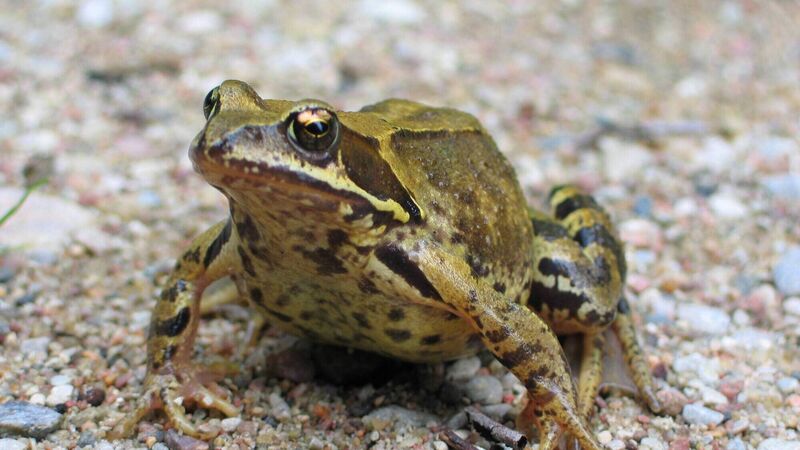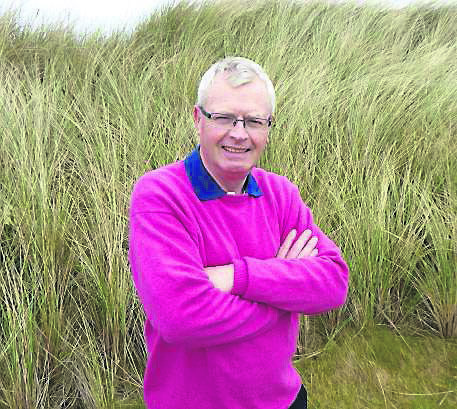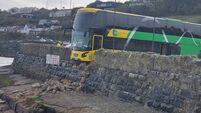Donal Hickey: Play your part in frog survey

Common European frog. Survey frog sightings can be sent online to the Irish Peatland Conservation Council.
Around now, frogs are emerging from winter hiding places and heading towards spawning grounds. You might even hear males croaking, or see them fight among themselves as they compete for female attention.
There’s a danger that the common frog might be dismissed as just that. But there’s nothing really common about this fascinating wild creature which is so much part of our wetlands.
This familiar friend from childhood has, for instance, a quite remarkable ability to camouflage itself. This was recently brought home to us whilst out walking when autumn leaves carpeted the woodlands. After almost stepping on something, a companion saw a slight movement and there it was — a frog.
If the frog hadn’t moved, it would have been impossible to see it as its skin had perfectly blended with the pale greens, yellows, and browns of the forest floor. Brilliant. We learned afterward that a frog can change colours to match its surroundings in two hours.

All of which arises from a reminder from the Irish Peatland Conservation Council (IPCC) about its Hop To It Frog Survey 2021, with an invitation to the public to take part. The survey theme this year is apt, Wetlands and Water, given that the frog is so dependent on water to complete its lifecycle in a range of habitats including garden ponds, grasslands, hedgerows, and wetlands like bogs.
Frogs, however, don’t need to be near a water source all year round as they can live comfortably on both land and water. During the colder months, they hide in long grass, under rocks, in compost heaps, or in dark and damp places from which they should be emerging by now.
Male and female frogs return to water to breed, in early spring when the weather begins to warm. Each male competes against other males for a female by croaking. Frogs are believed to return to the same source of water each year. While the common frog is protected under Irish and EU laws, it faces numerous local threats, many of which are caused by humans. The release of harmful chemicals from fertilisers and pesticides, the loss of habitat as a result of drainage, and the removal of wildlife corridors, such as hedgerows, are just some.
A frog breathes through its skin when underwater and, when the dangerous chemicals are present in a water source, these are absorbed through the skin causing death.
The IPCC’s Paula Farrell says: “Frogs provide an insight into the quality or status of habitat just by their presence alone due to the sensitive nature of their skin. I feel it is incredibly important to protect this animal and its habitat.’’ Survey frog sightings can be sent online to the IPCC.










